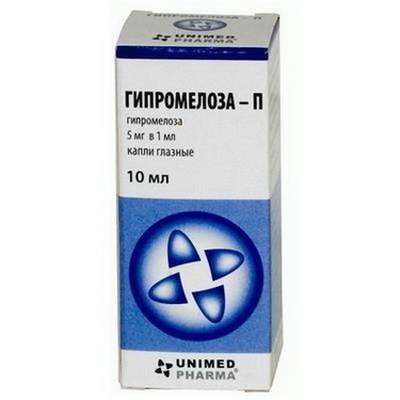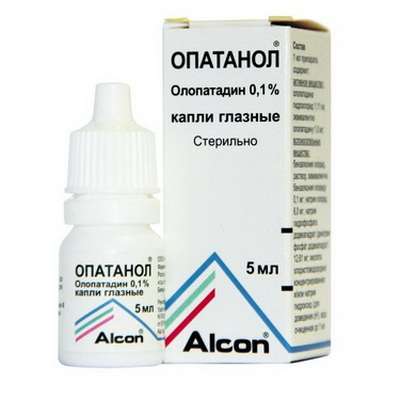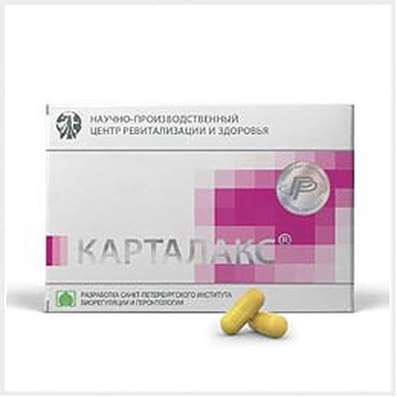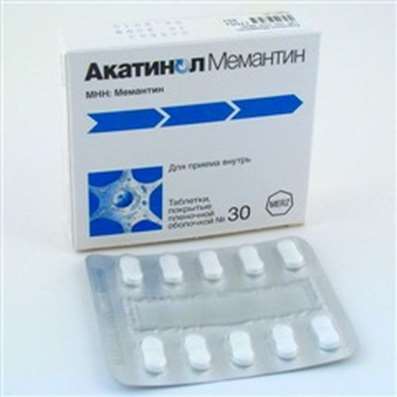Instruction for use: IRS 19
I want this, give me price
Dosage form: Nasal spray
Active substance: Streptococcus pneumoniae, type I + Streptococcus pneumoniae, type II + Streptococcus pneumoniae, type III + Streptococcus pneumoniae, type V + Streptococcus pneumoniae, type VIII + Streptococcus pneumoniae, type XII + Haemophilus
ATX
R07AX Other respiratory products
Pharmacological group:
Other immunomodulators
The nosological classification (ICD-10)
J01 Acute sinusitis: Inflammation of the paranasal sinuses; Inflammatory diseases of the paranasal sinuses; Purulent-inflammatory processes of the paranasal sinuses; Infectious-inflammatory disease of ENT organs; Infection of the paranasal sinuses; Combined sinusitis; Exacerbation of sinusitis; Acute inflammation of the paranasal sinuses; Acute bacterial sinusitis; Acute sinusitis in adults; Subacute sinusitis; Sinusitis acute; Sinusitis
J02.9 Acute pharyngitis, unspecified: Purulent pharyngitis; Acute rhinopharyngitis; Lymphonodular pharyngitis
J03.9 Acute tonsillitis, unspecified (angina agranulocytic): Throat infections; Acute tonsillitis; Angina; Follicular tonsillitis; Angina alimentary-hemorrhagic; Secondary sore throat; Sore throat primary; Angina follicular; Angina; Inflammatory diseases of the tonsils; Catarrhal angina; Lacunar angina; Acute Sore Throat; Tonsillitis; Tonsillitis acute; Tonsillar angina; Follicular sore throat; Bacterial tonsillitis
J04 Acute laryngitis and tracheitis: Cough in diseases of the upper respiratory tract; Laryngitis; Laryngitis acute; Tracheitis acute; Pharyngolaryngitis; Infectious-inflammatory disease of ENT organs
J06 Acute upper respiratory tract infections of multiple and unspecified locations: Frequent colds of viral diseases; Infections of ENT organs; Acute respiratory illness of influenza nature; Pain for colds; Acute catarrhal disease; Cold; Colds; Colds; Respiratory infection; Seasonal catarrhal disease; Seasonal colds; Pain in infectious and inflammatory diseases of the upper respiratory tract; Bacterial infections of the upper respiratory tract; Bacterial infections of the respiratory system; Viral respiratory disease; Viral respiratory tract infections; Inflammatory disease of the upper respiratory tract; Inflammatory diseases of the upper respiratory tract; Inflammatory diseases of the upper respiratory tract with difficult to separate sputum; Inflammatory respiratory disease; Secondary infections for colds; Difficult sputum separation in acute and chronic respiratory diseases; Upper respiratory tract infections; Infections of the upper respiratory tract; Respiratory tract infections; Respiratory and lung infections; Infectious-inflammatory diseases of the upper respiratory tract; Infectious-inflammatory diseases of the upper respiratory tract and ENT organs; Infectious-inflammatory diseases of the upper respiratory tract in adults and children; Infectious-inflammatory diseases of the upper respiratory tract; Infectious inflammation of the respiratory tract; Respiratory tract infection; Qatar upper respiratory tract; Catarrh of the upper respiratory tract; Catarrh of the upper respiratory tract; Catarrhal phenomena from the upper respiratory tract; Cough in diseases of the upper respiratory tract; Cough for colds; ARVI; ARI; ARI with phenomena of rhinitis; Acute respiratory infection; Acute infectious-inflammatory disease of the upper respiratory tract; Acute respiratory disease; Persecution in the throat or nose; Respiratory and viral infections; Respiratory diseases; Respiratory infections; Recurrent respiratory tract infections; Secondary infections with influenza; Influenza states; Feverish conditions for influenza
J10 Influenza caused by an identified influenza virus: Influenza A; Influenza B; Influenza A type; Influenza A of type B
J11 Influenza, virus not identified: Influenza; Influenza in the early stages of the disease; Influenza in children; cold in the chest; Begins flu-like condition; Acute disease parainfluenza; parainfluenza; parainfluenza state; influenza epidemics; The pains of the influenza
J30 Vasomotor and allergic rhinitis: Allergic rhinopathy; Allergic rhinosinusopathy; Allergic diseases of the upper respiratory tract; Allergic rhinitis; Allergic rhinitis seasonal; Vasomotor runny nose; Prolonged allergic rhinitis; All-year-round allergic rhinitis; All-year allergic rhinitis; Year-round or seasonal allergic rhinitis; All-the-year-round rhinitis of an allergic nature; Rhinitis vasomotor allergic; Exacerbation of pollinosis in the form of rhinoconjunctival syndrome; Acute allergic rhinitis; Edema of the nasal mucosa; Edema of the nasal mucosa; Edema of the mucous membrane of the nasal cavity; Swelling of the nasal mucosa; Swelling of the nasal mucosa; Pollinosis; Permanent allergic rhinitis; Rhinoconjunctivitis; Rhinosinusitis; Rhinosinusopathy; Seasonal allergic rhinitis; Seasonal allergic rhinitis; Hay rhinitis; Chronic allergic rhinitis; Allergic diseases of the respiratory tract
J31 Chronic rhinitis, nasopharyngitis and pharyngitis: Allergic rhinosinusopathy; Inflammation of the nasal mucosa; Infectious and inflammatory diseases of ENT organs; Catarrh of the nasopharyngeal region; Year-round rhinitis; Ozena; Persecution in the throat or nose; Rhinitis hyperplastic; Rhinitis chronic; Pharyngoesophagitis; Chronic Bacterial Rhinitis
J32 Chronic sinusitis: Allergic rhinosinusopathy; Purulent sinusitis; Catarrh of the nasopharyngeal region; Catarrhal inflammation of the paranasal sinuses; Exacerbation of sinusitis; Sinusitis chronic
J35 Chronic diseases of the tonsils and adenoids
J40 Bronchitis not specified as acute or chronic: Asthmatic bronchitis; Allergic bronchitis; Bronchitis allergic; Asthmatic bronchitis; Rhinotraheobronchitis; Asthmatic bronchitis; Bacterial bronchitis; Bronchitis; Bronchitis of the smoker; Bronchitis of smokers; Inflammation of the lower respiratory tract; Disease of the bronchi; Qatar smoker; Cough smokers; Cough with inflammatory diseases of the lungs and bronchi; Disturbance of bronchial secretion; Impaired bronchial function; Acute tracheobronchitis; Subacute bronchitis; Tracheobronchitis; Chronic lung diseases
J42 Chronic bronchitis, unspecified: Recurrent bronchitis; Asthmatic bronchitis; Asthmatic bronchitis; Bronchitis chronic; Inflammatory respiratory disease; Disease of the bronchi; Qatar smoker; Cough with inflammatory diseases of the lungs and bronchi; Exacerbation of chronic bronchitis; Chronic bronchitis; Chronic Obstructive Pulmonary Diseases; Chronical bronchitis; Chronic bronchitis of smokers; Chronic spasmodic bronchitis; Allergic bronchitis; Bronchitis allergic
Z100 * CLASS XXII Surgical practice: Abdominal surgery; adenomectomy; Amputation; Coronary angioplasty; Angioplasty of the carotid arteries; Antiseptic skin treatment for wounds; Antiseptic Hand; Appendectomy; atherectomy; Balloon coronary angioplasty; Vaginal hysterectomy; The coronary bypass; Interventions in the vagina and cervix; Interventions on the bladder; Intervention in the mouth; Restoration and reconstructive surgery; Hand hygiene of medical personnel; Gynecologic surgery; Gynecological intervention; Gynecological surgery; Hypovolemic shock during operations; Disinfection of purulent wounds; Disinfection of wounds edges; Diagnostic intervention; Diagnostic procedures; Cervical Diathermocoagulation; Long-surgery; Replacing the fistula catheters; Infection in orthopedic surgery; Artificial heart valve; cystectomy; Short-term outpatient surgery; Short-term operation; Short surgical procedures; Krikotireotomiya; Blood loss during surgery; Bleeding during surgery and in the postoperative period; Kuldotsentez; laser photocoagulation; laser coagulation; retinal laser coagulation; Laparoscopy; Laparoscopy in Gynecology; CSF fistula; Small gynecological operations; Small surgical procedures; Mastectomy and subsequent plastic; mediastinotomy; Microsurgical operations on the ear; Mukogingivalnye operation; suturing; Minor surgery; neurosurgical operation; Immobilization of the eyeball in ophthalmic surgery; testectomy; pancreatectomy; Perikardektomiya; The period of rehabilitation after surgery; The period of convalescence after surgery; Percutaneous transluminal coronary angioplasty; Pleural thoracentesis; Pneumonia postoperative and posttraumatic; Preparation for surgical procedures; Preparation for surgery; Preparation of the surgeon's hands before surgery; Preparation of the colon for surgical procedures; Postoperative aspiration pneumonia in neurosurgical and thoracic surgery; Postoperative nausea; Postoperative bleeding; postoperative granuloma; postoperative shock; The early postoperative period; myocardial revascularization; Radiectomy; gastric Resection; bowel resection; uterine Resection; liver Resection; enterectomy; Resection of part of the stomach; Reocclusion of the operated vessel; Bonding tissues during surgical procedures; Removal of sutures; Condition after eye surgery; Condition after surgery; Condition after surgery in the nasal cavity; Condition after gastrectomy; Status after resection of the small intestine; Condition after tonsillectomy; Condition after removal of the duodenum; Condition after phlebectomy; Vascular surgery; Splenectomy; Sterilization of surgical instruments; Sterilization of surgical instruments; sternotomy; Dental surgery; Dental intervention in periodontal tissues; strumectomy; Tonsillectomy; Thoracic surgery; Thoracic surgery; total gastrectomy; Transdermal intravascular coronary angioplasty; Transurethral resection; Turbinektomiya; Removal of a tooth; cataract surgery; Removal of cysts; tonsillectomy; Removal of fibroids; Removing the mobile primary teeth; Removing polyps; Removing broken tooth; Removal of the uterus body; Removal of sutures; Fistula likvoroprovodyaschih ways; Frontoetmoidogaymorotomiya; Surgical infection; Surgical treatment of chronic limb ulcers; Surgery; The surgery in the anal area; The surgery on the colon; Surgical practice; The surgical procedure; Surgical interventions; Surgery on the gastrointestinal tract; Surgical procedures on the urinary tract; Surgical procedures on the urinary system; Surgical intervention of the genitourinary system; Surgical procedures on the heart; Surgical manipulation; surgery; Surgery on the veins; Surgical intervention; Vascular surgery; Surgical treatment of thrombosis; Surgery; cholecystectomy; Partial gastric resection; hysterectomy; Percutaneous transluminal coronary angioplasty; Percutaneous transluminal angioplasty; Coronary artery bypass; tooth Extirpation; Extirpation of milk teeth; pulpectomy; pulsative cardiopulmonary bypass; tooth Extraction; teeth Extraction; cataract extraction; Electrocoagulation; endourological intervention; episiotomy; Etmoidotomiya; Complications after tooth extraction
Composition and release form
Spray nasal 100 ml
Active substances:
Bacterial lysates 43.27 ml
Composition of bacterial lysates:
Streptococcus pneumoniae type I, II, III, V, VIII, XII to 1.11 ml
Staphylococcus aureus ss aureus 9.99 ml
Neisseria subflava 2.22 ml
Neisseria perflava 2.22 ml
Klebsiella pneumoniae ss pneumoniae 6.66 ml
Moraxella catarrhalis 2.22 ml
Haemophilus influenzae type B 3.33 ml
Acinetobacter calcoaceticus 3.33 ml
Enterococcus faecium 0.83 ml
Enterococcus faecalis 0.83 ml
Streptococcus pyogenes group A 1.66 ml
Streptococcus dysgalactiae group C 1.66 ml
Streptococcus group G 1.66 mL
Auxiliary substances: glycine - 4.25 g; Sodium mertiolate - no more than 1.2 mg; Flavoring based on Nerol (linalol, alpha-terpineol, geraniol, methylanthranilate, limonene, geranilacetate, diethyleneglycol monoethyl ether, phenylethyl alcohol) - 12.5 mg; Purified water - up to 100 ml
In bottles of 20 ml (60 doses); In the box 1 bottle.
Description of dosage form
Transparent colorless, sometimes with a yellowish hue, a liquid with a faint smell of flavor based on Nerol.
Characteristic
Complex preparation of bacterial lysates.
Pharmachologic effect
Mode action - increasing specific and nonspecific immunity.
Pharmacodynamics
IRSŪ 19 increases specific and nonspecific immunity. When spraying IRSŪ 19, a fine aerosol is formed which covers the nasal mucosa, which leads to a rapid development of the local immune response. Specific protection is caused by locally formed antibodies of the class of secretory immunoglobulins type A (IgA), which prevent fixation and reproduction of pathogens of infection on the mucosa. Nonspecific immunoprotection is manifested in an increase in phagocytic activity of macrophages and an increase in the content of lysozyme.
Indications for the preparation IRS 19
Prevention of chronic diseases of the upper respiratory tract and bronchi;
Treatment of acute and chronic diseases of the upper respiratory tract and bronchi (rhinitis, sinusitis, laryngitis, pharyngitis, tonsillitis, tracheitis, bronchitis), etc .;
Restoration of local immunity after influenza and other viral infections;
Preparation for routine surgical intervention on ENT organs and in the postoperative period.
Contraindications
Hypersensitivity to the drug or its components in the anamnesis;
Autoimmune diseases.
Application in pregnancy and breastfeeding
Possible application during pregnancy and during breastfeeding, if the expected effect of therapy exceeds the potential risk to the fetus and the baby.
Side effects
When taking IRSŪ 19, the following side effects may be noted, either related or unrelated to the action of the drug.
Skin reactions: in rare cases, hypersensitivity reactions (urticaria, angioedema) and skin erythema-like and eczematoid reactions are possible.
From the ENT organs and respiratory organs: rarely - asthma attacks and cough.
In rare cases, at the beginning of treatment, there may be a rise in body temperature (≥39 ° C) for no apparent reason, nausea, vomiting, abdominal pain, diarrhea, rhinopharyngitis, sinusitis, laryngitis, bronchitis.
Single cases of thrombocytopenic purpura and erythema nodosum are described.
If you experience any of the above symptoms, it is recommended that you consult a doctor.
Interaction
Cases of negative interaction with other drugs are unknown. In the event of the appearance of clinical symptoms of bacterial infection, antibiotics may be prescribed against the backdrop of continued use of IRSŪ 19.
Dosing and Administration
Intranasally, by aerosol administration of 1 dose (1 dose = 1 short pressing of the atomizer). When spraying the drug, keep the bottle in a vertical position and do not tilt the head.
For prevention of adults and children from 3 months of age (2-3 weeks before the expected increase in incidence) - 1 dose of drug in each nasal passage 2 times a day for 2 weeks.
For the treatment of acute and chronic diseases of the upper respiratory tract and bronchi: adults and children over 3 years - 1 dose of drug in each nasal passage 2-5 times a day; Children from 3 months to 3 years - 1 dose of drug in each nasal passage 2 times a day (after prior release from the mucous discharge). Treatment is carried out until the symptoms of infection disappear.
To restore local immunity after a previous flu and other respiratory viral infections: adults and children - 1 dose of drug in each nasal passage 2 times a day for 2 weeks.
In preparation for routine surgery and in the postoperative period: adults and children - 1 dose of drug in each nasal passage 2 times a day for 2 weeks (begin treatment recommended for 1 week before the planned surgery).
At the beginning of treatment, reactions such as sneezing and increased discharge from the nose may occur. As a rule, they are of a short-term nature. If these reactions take a severe course, reduce the frequency of administration of the drug or cancel it.
If the drug is left for a long time without use, a drop of liquid can evaporate and the formed crystals will clog the outlet of the nozzle. This phenomenon happens most often when the nozzle is removed and put into the package top end down next to the bottle, without previously washing and drying it. When plugging, the nozzles are made several times in succession, so that the liquid can pass under the effect of excessive pressure. If this does not work, the nozzle is lowered for a few minutes into warm water.
Overdose
Cases of overdose are unknown.
Precautionary measures
The use of IRS 19Ū does not affect the psychomotor functions associated with driving a car or controlling cars and machinery.
Special instruction
When prescribing drugs on the basis of bacterial lysates for the purpose of immunostimulation, asthma attacks may occur in patients with bronchial asthma. In this case, it is recommended to stop treatment and not take this class of drugs in the future.
Precautions for use
Spray bottle:
- Protect from heating above 50 ° C and from direct sunlight;
- do not pierce the bottle;
- Do not burn the bottle, even if it is empty.
Manufacturer
Solvay Pharma, France.
Storage conditions of the drug IRS 19
At a temperature not higher than 25 ° C (do not freeze). In a strictly vertical position.
Keep out of the reach of children.
Shelf life of the drug IRS 19
3 years.
Do not use after the expiry date printed on the package.

 Cart
Cart





